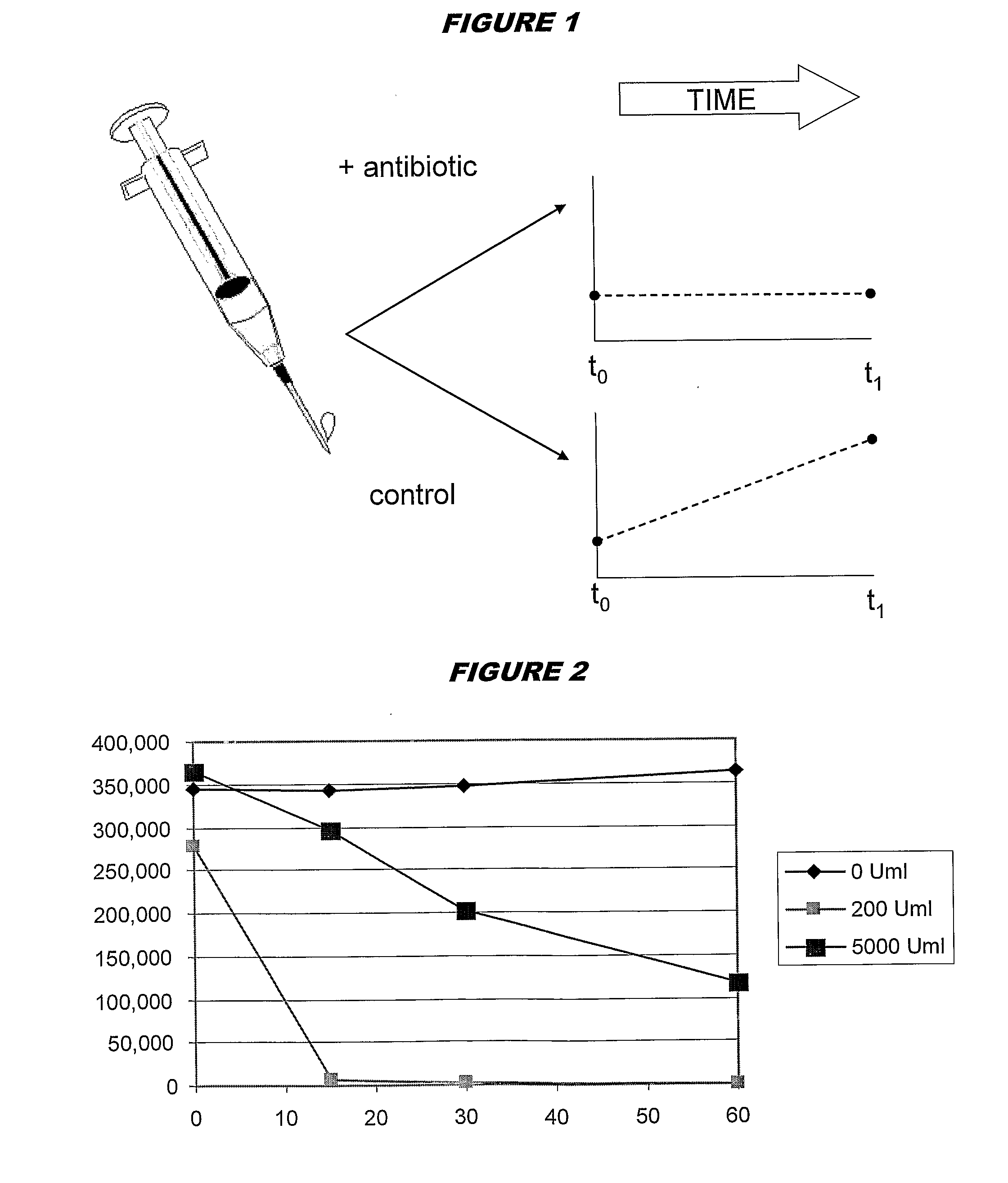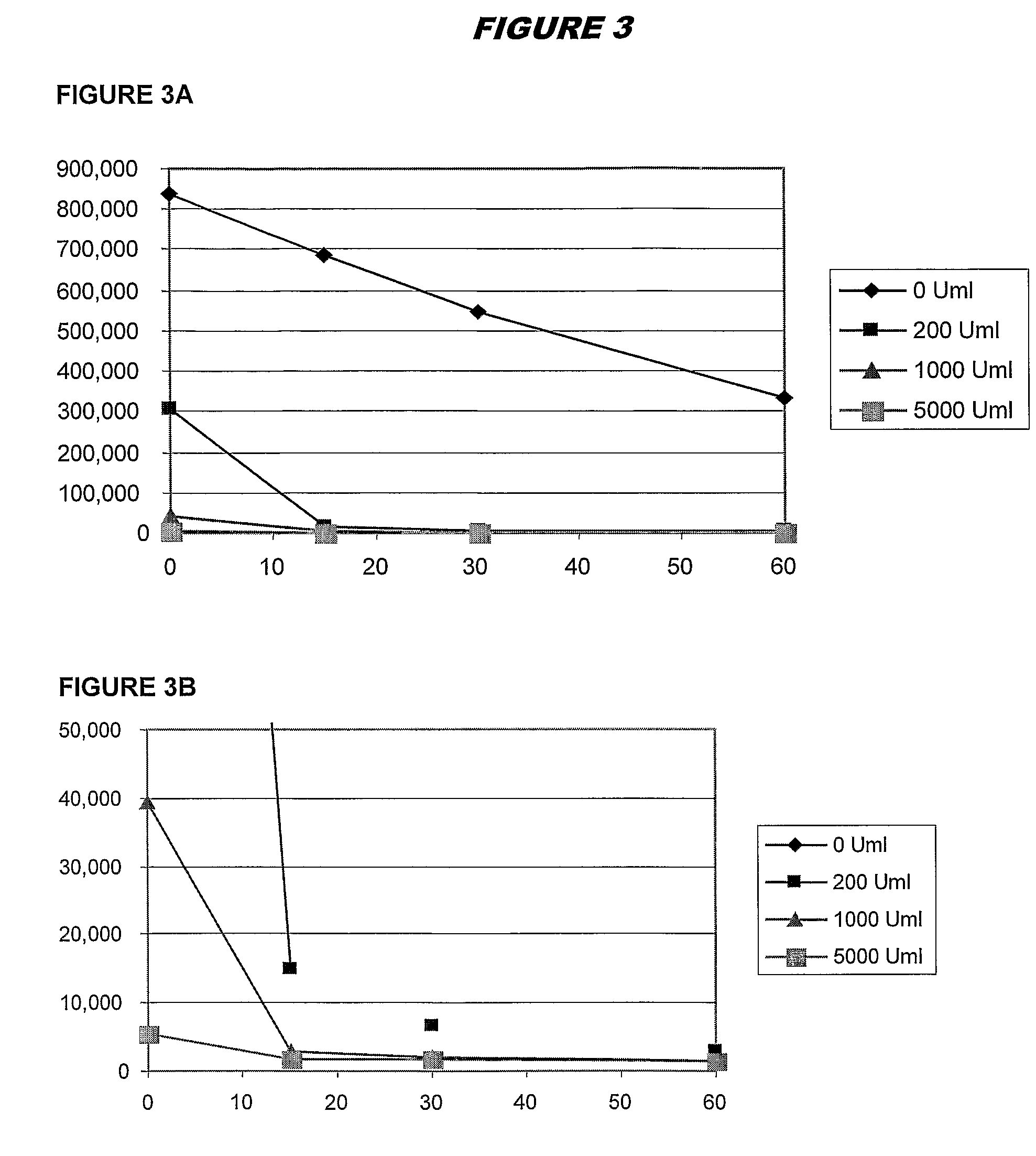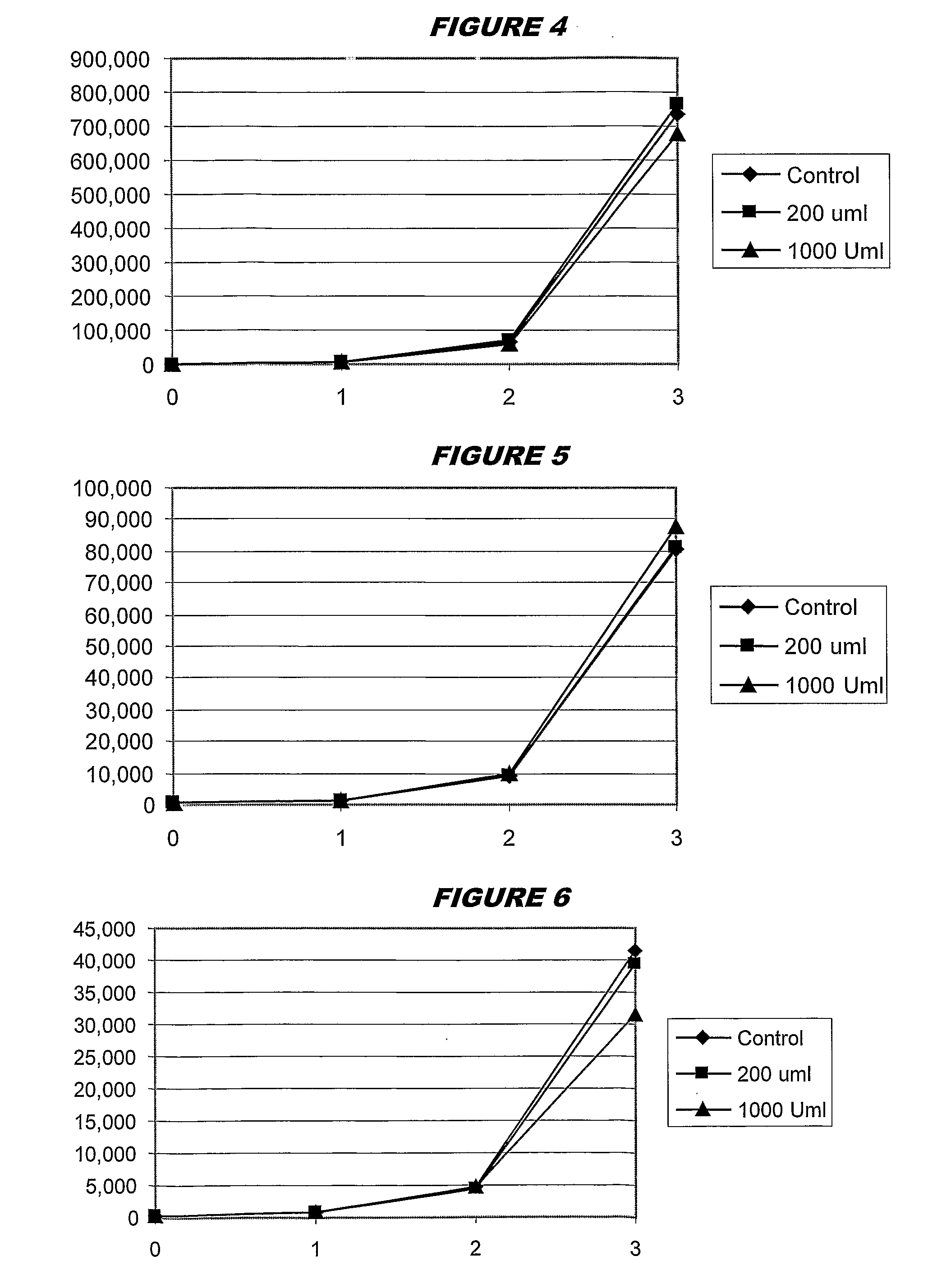Distinguishing cells in a sample by inactivating extracellular enzyme before releasing intracellular enzyme
a technology of extracellular enzyme and cell, applied in the field of cell analysis, can solve the problems of interference with the test, other people cannot, etc., and achieve the effect of reducing the risk of protease and inactivating serum ak
- Summary
- Abstract
- Description
- Claims
- Application Information
AI Technical Summary
Benefits of technology
Problems solved by technology
Method used
Image
Examples
Embodiment Construction
[0095]Experimental work used adenylate kinase-generated ATP to drive a luciferin / luciferase activity, giving results in RLUs as a quantitative measure of initial ATP levels. All AK assays were performed at pH 7.5, and 37° C. Results of the assay were read at ambient temperature.
[0096]In preliminary experiments, adenylate kinase inactivation was performed by reducing pH. In later experiments, inactivation used porcine trypsin at pH 7.5. The pH reduction permanently inactivated blood AK, without affecting intracellular bacterial AK, but the use of trypsin was more efficient and less clumsy.
[0097]Thus, the current protocol used in the assay is:
[0098]Add 1 ml saponin / sps / ppg to 10 ml whole blood—allow to fully lyse (10-15 mins).
[0099]Centrifuge 5,000 rpm for 45 mins.
[0100]Remove Supernatant.
[0101]Prepare a 10× concentrate of trypsin (10,000 U / ml) stock in appropriate media (e.g. MH broth is generally used).
[0102]Resuspend pellet in 30-40 ml MH (a second centrifugation / resuspension (“was...
PUM
| Property | Measurement | Unit |
|---|---|---|
| pH | aaaaa | aaaaa |
| temperature | aaaaa | aaaaa |
| concentrations | aaaaa | aaaaa |
Abstract
Description
Claims
Application Information
 Login to View More
Login to View More - R&D
- Intellectual Property
- Life Sciences
- Materials
- Tech Scout
- Unparalleled Data Quality
- Higher Quality Content
- 60% Fewer Hallucinations
Browse by: Latest US Patents, China's latest patents, Technical Efficacy Thesaurus, Application Domain, Technology Topic, Popular Technical Reports.
© 2025 PatSnap. All rights reserved.Legal|Privacy policy|Modern Slavery Act Transparency Statement|Sitemap|About US| Contact US: help@patsnap.com



